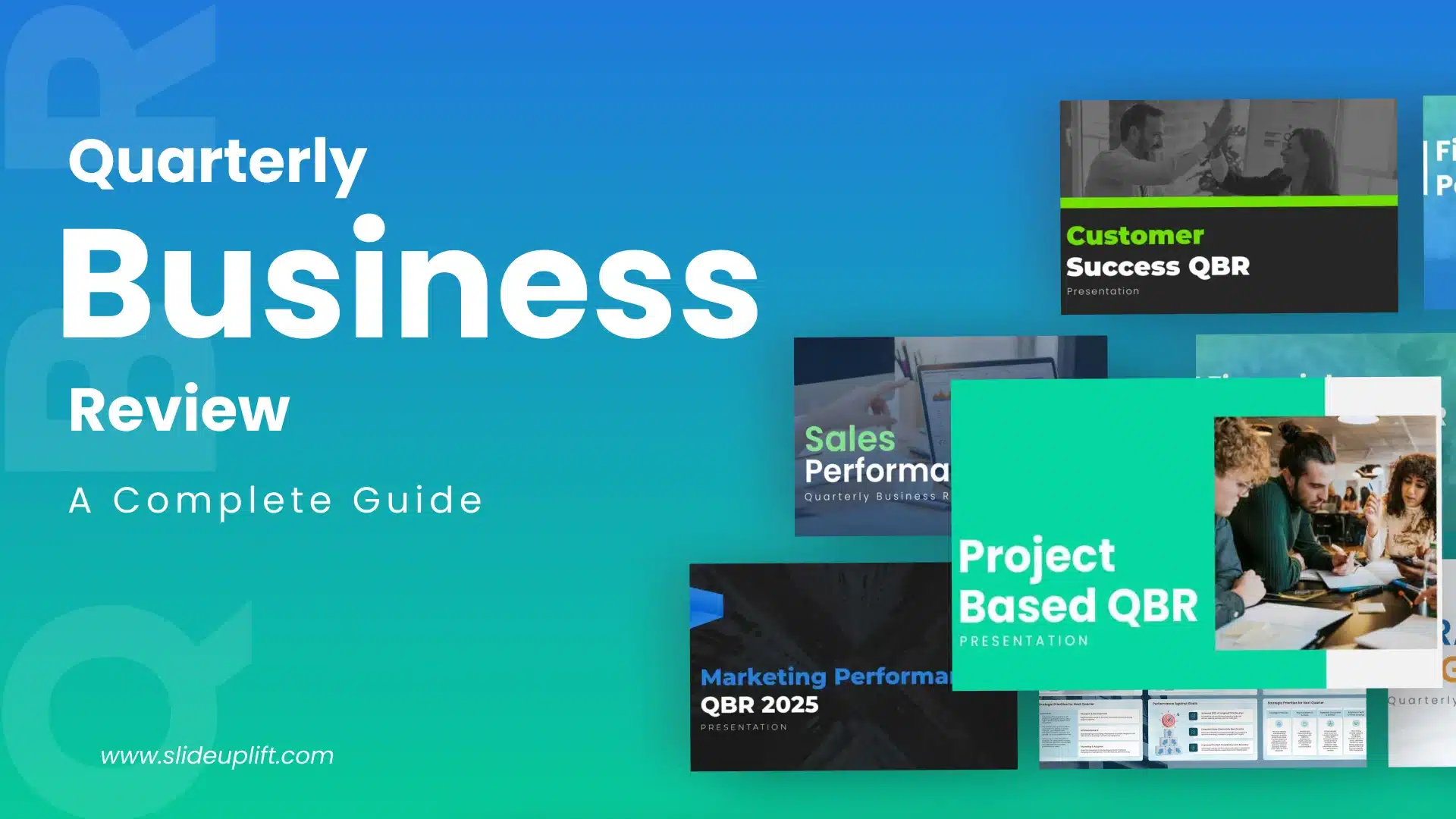6 Highly Effective Mind Maps Templates
Brainstorming sessions and collaborative team discussions can generate nearly 50% more ideas than individuals working alone. (Harvard Business Review). This diversity of ideas can lead to more innovative solutions and stronger presentations.
A mind map is a visual tool to present concept and their relationships with nodes and lines. Mind maps simplify complex information, enhance audience engagement, and organize ideas logically for more effective corporate presentations.
They facilitate brainstorming, help arrange important ideas, and establish a distinct visual hierarchy, which improves the impact of presentations and makes data easier to understand.
In our director’s words, “Through our extensive seven years of experience in the presentation design industry, working with high-level business and professional entrepreneurs, we have found it to be one of the most effective ways to organize visual ideas”
Why mind mapping is effective? According to an excerpt from a study conducted by Farrand, Hussain, & Hennessy in 2002, Mind mapping improves memory retention by 10-15% compared to traditional note-taking methods. This is because mind maps organize information hierarchically and visually, making it easier for the brain to process and recall.
In this article, we’ll examine how mind maps transform business presentations by giving strategic planning efficiency, structure, and clarity. Learn how mind maps may improve decision-making, simplify ideas, and visually arrange difficult concepts for organizations. We’ll also go over the many kinds of mind maps, how they may be used to meet particular corporate objectives, and how to use them most effectively in your presentations.
Why Mind Maps Are the Key to Effective Business Presentations
Effective decision-making and growth are powered by impactful presentations in the modern world of business. A professionally designed presentation captures the key insights simply and appealingly.
Mind maps aid this process by simplifying complex information, improving brainstorming sessions, and structuring fascinating stories. This guide looks at the practical application of mind maps, their role in improving business presentations, and their impact.
One of the most effective tools in achieving this is the mind map.
Mind maps help to visually represent ideas, concepts, their flow, and relationships.
Let us understand why mindmaps are game changers for effective business presentations and in the long run successful businesses.
Simplify Complex Ideas:
Research from Davies (2011), published in Higher Education, shows that mind maps enhance comprehension by structuring ideas visually, making it easier for audiences to process complex information.
This makes your business meetings and presentations fruitful.
Boost creativity and clarity:
Presenting ideas and strategies is tricky and requires some fluidity in the way you present them; thus, mind maps come in handy. They are designed to help you show your ideas, inferences, and interpretations freely, and with all the possible permutations and combinations you want to express.
As our brains can process visual data, 6x to 600x faster than text, as inferred by Emailaudience, Mind maps are flexible to use, and they enhance both creative thinking and structured presentation, ensuring clear communication of your business ideas.
A notable example is Alison Jones, an accountancy lecturer at Cardiff and Vale College. She integrated mind mapping into her teaching methodology. She integrated to demystify complex accounting principles for her students. By visually mapping out financial statements and accounting standards, jones transformed intricate topics into accessible visual formats. This improved the retention of complex financial information.
Engage your audience:
As mind maps are visual tools, they grab more attention than a simple textual arrangement of ideas. Also, they come in a lot of easy-to-understand and visually appealing designs and formats.
Well-structured and visually engaging mind maps can significantly improve audience retention. To streamline your workflow, explore professionally designed mind map templates that align with presentation best practices.
Also showing relationships between ideas and concepts in mindmap is in itself clutter-free and reduces the visual load on your audiences, improving their engagement.
A Fortune 500 company used mind maps to streamline their quarterly strategy meetings. By visualizing workflows and priorities, they reduced meeting times by 30% and increased actionable insights by 40%.
Explore our free templates through our trial plan.
Reduced visual load on the audience, improves understanding:
A well-structured mind map minimizes cognitive load, making complex concepts, strategies, and problem-solving frameworks easier to grasp and retain.
Enhances collaboration:
Mind maps are perfect for team brainstorming sessions and enhance collaboration.
Prezi, In the popular work 2018, ’ The State of Presentations Report’ highlighted how visual collaboration tools, including mind maps, improve team alignment and presentation quality, leading to better outcomes.
Here’s how Prezi talks about Mind maps for making brainstorming effective and interactive, which in the long run improves team collaboration.
An IT company integrated mind maps for project brainstorming, leading to a 20% reduction in planning errors and improved cross-team collaboration.
Types of Mind Maps for Business Presentations
Let us explore the five major types of mind maps professionals use for business presentations:
Concept Mind Maps:
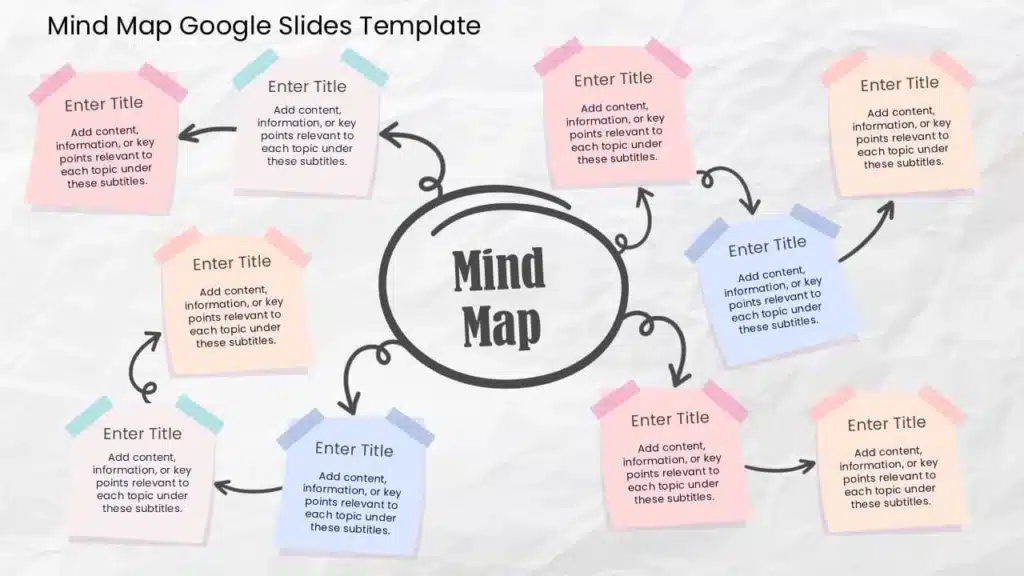

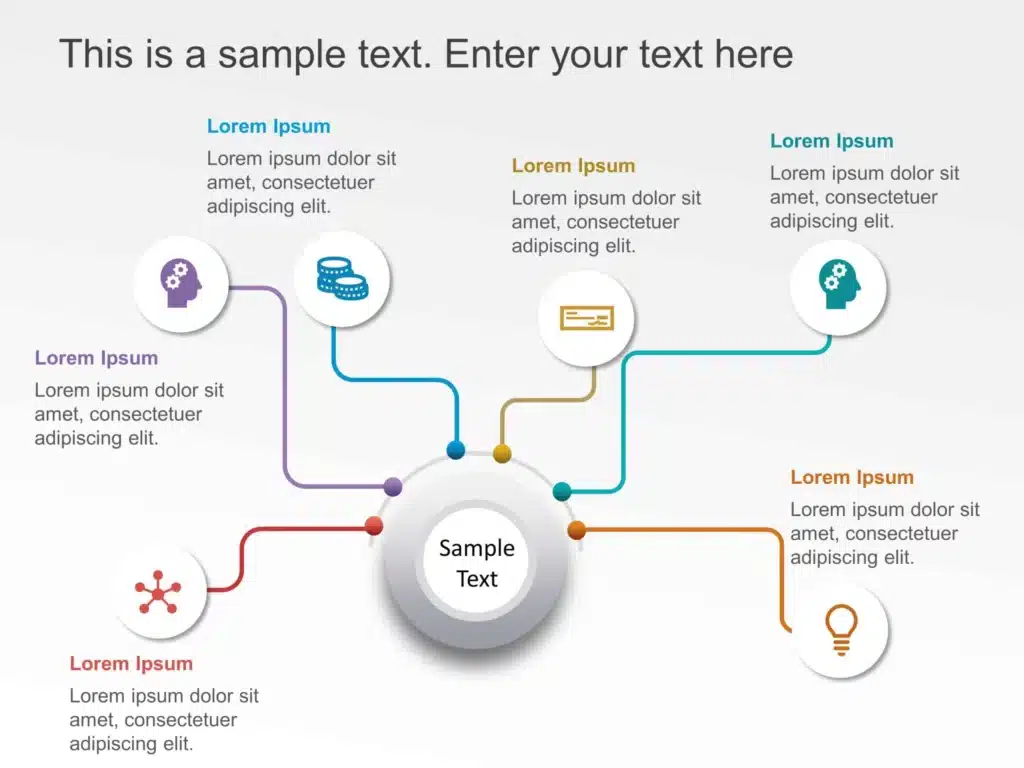
A mind map showing connections between concepts ideas, or themes using connecting lines or nodes.
These are used to show the relationship between different elements of business strategies, organizational structures product development cycles and solutions, etc.
Bubble Mind Maps:

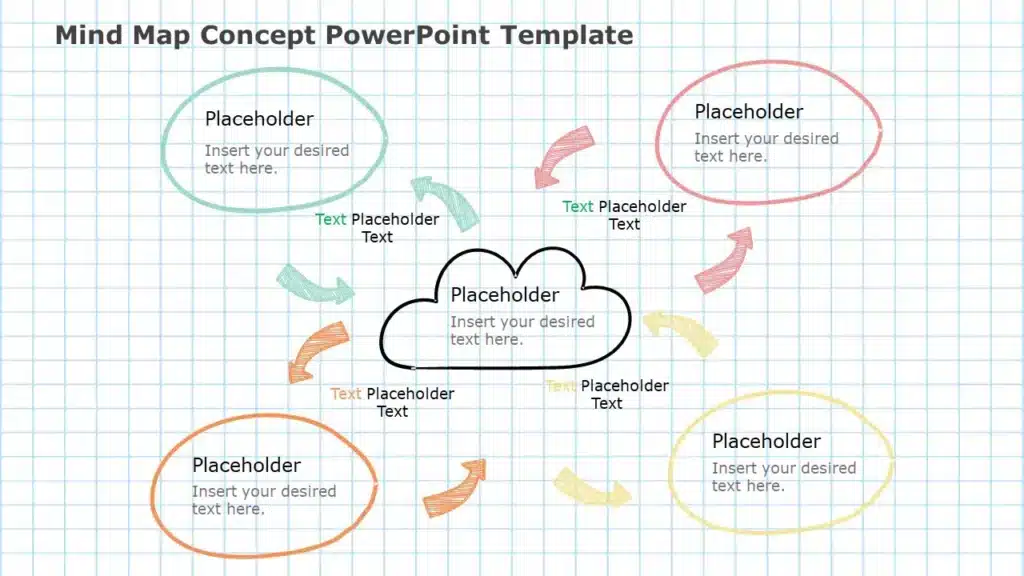
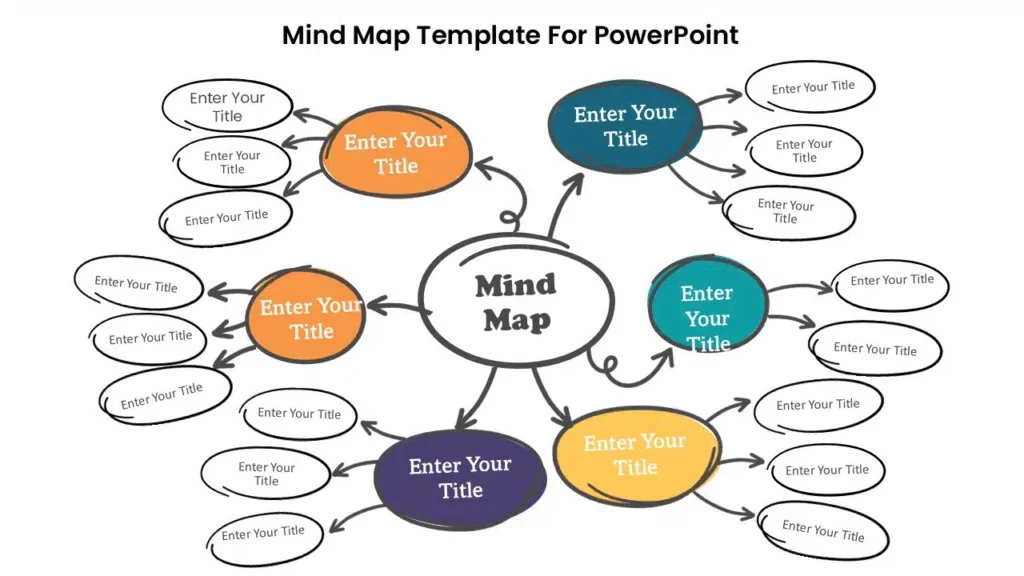
A bubble mind map helps you to easily set up a visual hierarchy, all the equally important concepts have bubbles of similar size, and other more important ideas and concepts are placed in larger bubbles.
Moreover, they are easy to understand, as they are uniform eliminating the viewer’s bias towards different shapes for prioritizing the nodes.
You can use them to show product features, customer personas, and different problem-solving frameworks.
Tree Mind Maps:
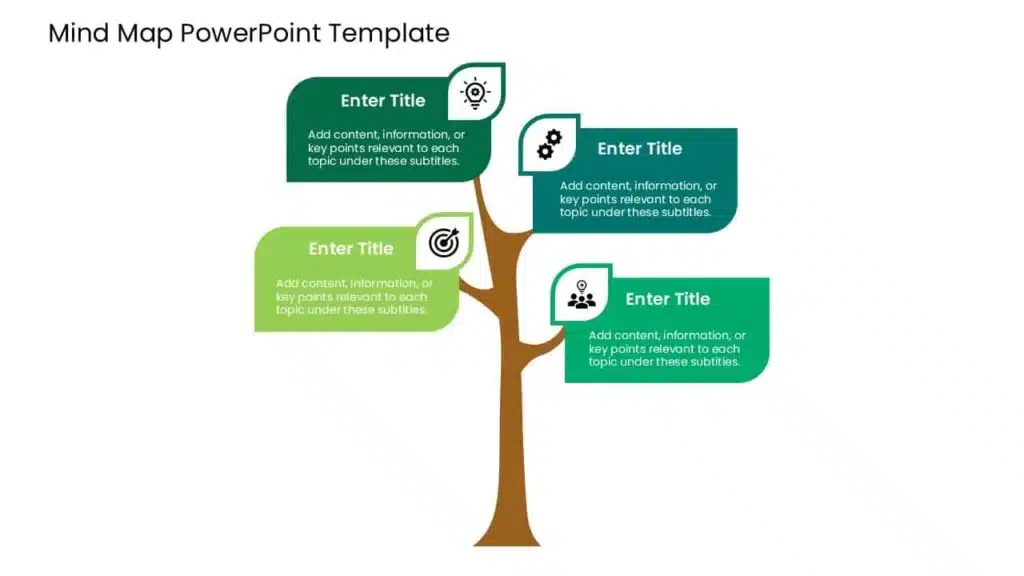


A very famous one, the Tree-shaped mind map has a hierarchical structure. A main idea or concept branches out into its subcategories and further micro-classifications.
This structure helps to make the brainstorming as intricate as it can get.
Ideal for financial breakdowns, project task hierarchies, and more.
Flow Mind Maps:
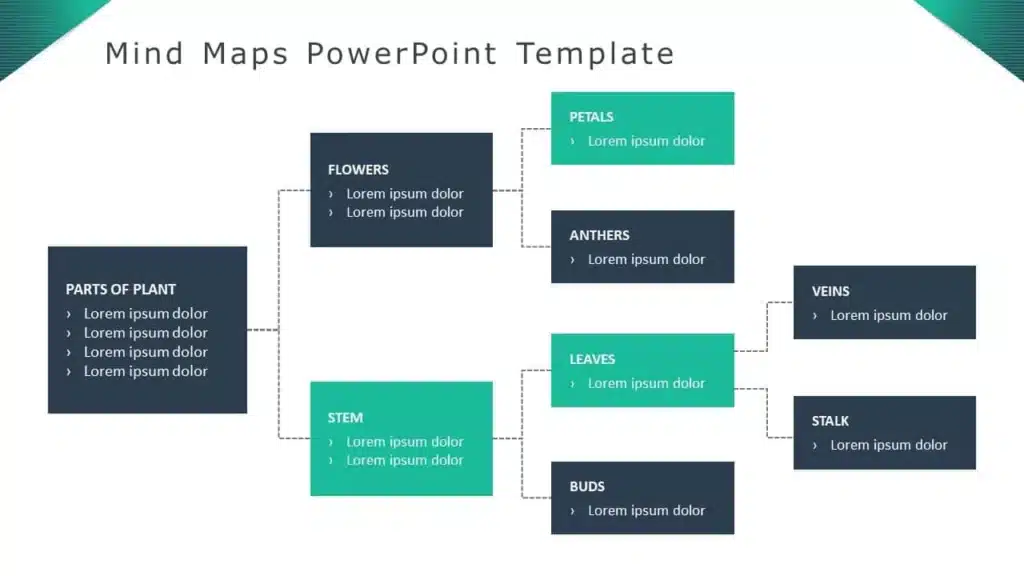

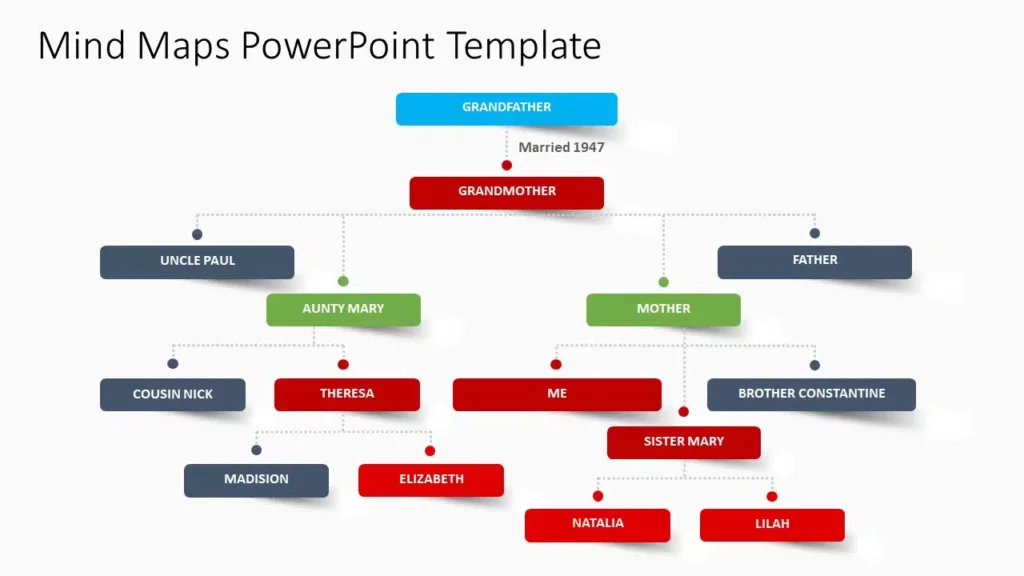
A flow mind map should be used to show processes, showing steps in a linear and branching format.
Best for showing workflows, decision-making processes, or step-by-step processes.
Ideal for sales funnels, customer journey maps, or other operational processes.
Brace Mind Maps:


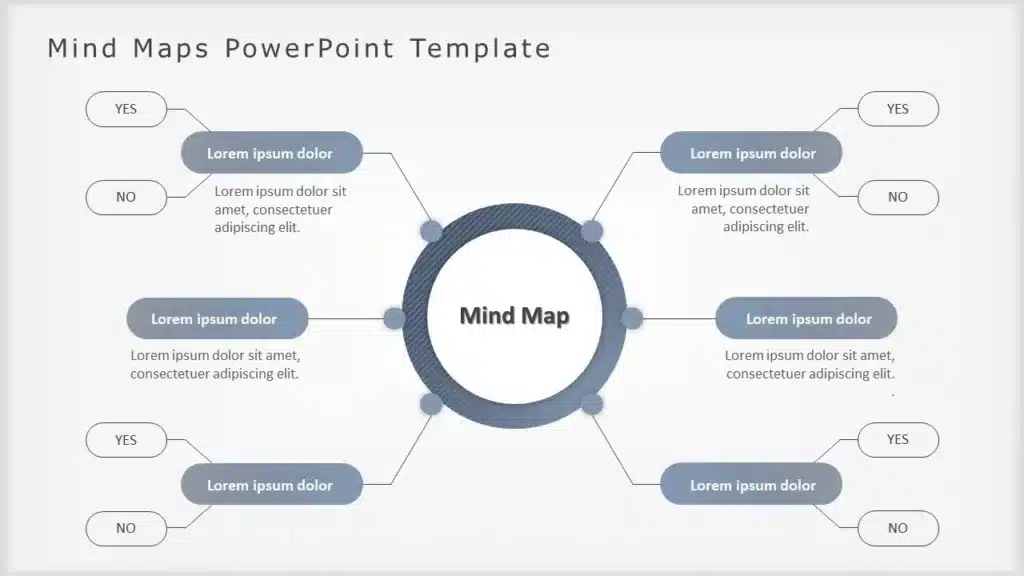
A Brace Map is similar to a Tree Map because they are both effective classification tools for information. However, a brace map consists of a dedicated space intended for analysis, whereas a TreeMap is simply a classification tool.
Think of it like this – a Tree Map is the table of contents for a Brace Map. Often, a TreeMap is used for external communication, where the intention is to showcase information to a larger audience of those unfamiliar with the concept or your organization.
A Brace Map works better in internal communications and the organization of research and analyses within an organization.
Spider Mind Maps:

The Spider Web Mind map is a business plan mind map, which is very similar to a spider web in appearance, with the golden benefit of interlinking between the surrounding nodes and lines.
Great for presenting analysis, problem-solving frameworks, SWOT analysis, and brainstorming sessions.
These were a few types of business mind map examples you should explore for your next presentation.
Things To Keep In Mind While Making A Mind Map
Making a mind map for business ideas is quite easy. They are the “first draft” of any brainstorming session for plans, strategies, etc. However, despite their deliberately unorganized functionality, some things need to be kept in mind before creating an effective mind map.
Do not lose sight of the central theme of your mind map. Often with mind-mapping, given the plethora of ideas, it is easy to forget that. This leads to your mind map losing its logical flow as it devolves into multiple tangents. So, keep a check on your central/core theme while jotting down ideas and notes.
Be careful when constructing associations. When done right, they provide a robust and clean diagram that visually represents the various aspects of a concept. Too many associations or indirect connections cause confusion and complications, so it is best to limit yourself to about 7 broader direct associations to keep things simple.
Avoid sentences or long-winded explanations. At this stage of brainstorming, you only need keywords or simple phrases to communicate larger ideas. They can be further expanded upon or rejected once the mind-mapping session is over and it is time to finalize a plan.
Using colors and shapes can ensure that your mind map is fun, engaging, and easy to follow. Having a monotonous mind map in business presentations can sometimes have the opposite effect, wherein it becomes too complex and too serious for an audience to understand. Colors and shapes help the audience visualize your plan much better.
Best Practices for Using Mind Maps in Business Presentations
Wondering how to mind map effectively? When creating a mind map in business presentations, you should focus on the best practices to make your presentations effective and save time.
These are the key best practices for using mind maps in business presentations;
- Start With A Clear Central Idea
- Keep It Simple And Focused
- Use Visual Hierarchy
- Incorporate Colors, Icons, Graphics, Etc.
- Make It Interactive
- Align With Your Presentation Flow
- Use Professional Templates
- Practice Balance Between Texts And Visuals.
- Always Test For Clarity And Readability
- Make It Audience-Centric
Why Choose Us to Design Your Presentations
Creating presentations, especially as businesses and professionals, is not an easy task. It is time-consuming and frustrating.
Creating visually appealing and effective presentations requires a strong understanding of design principles and brand consistency.
As experts in professional presentation design, we have helped thousands of businesses with all their presentation needs, we use tools like mind maps and implement the best practices in all our professional presentations.
Our professionally designed mind map templates use visual hierarchy principles to ensure clarity and engagement. Unlike generic templates, ours incorporate smooth animations, aesthetic designs, and compatibility with both PowerPoint and Google Slides—allowing professionals to edit seamlessly on the go.
With thousands of businesses trusting our templates, we ensure your presentations stand out with impact. Explore them all for your effortless future presentations.







